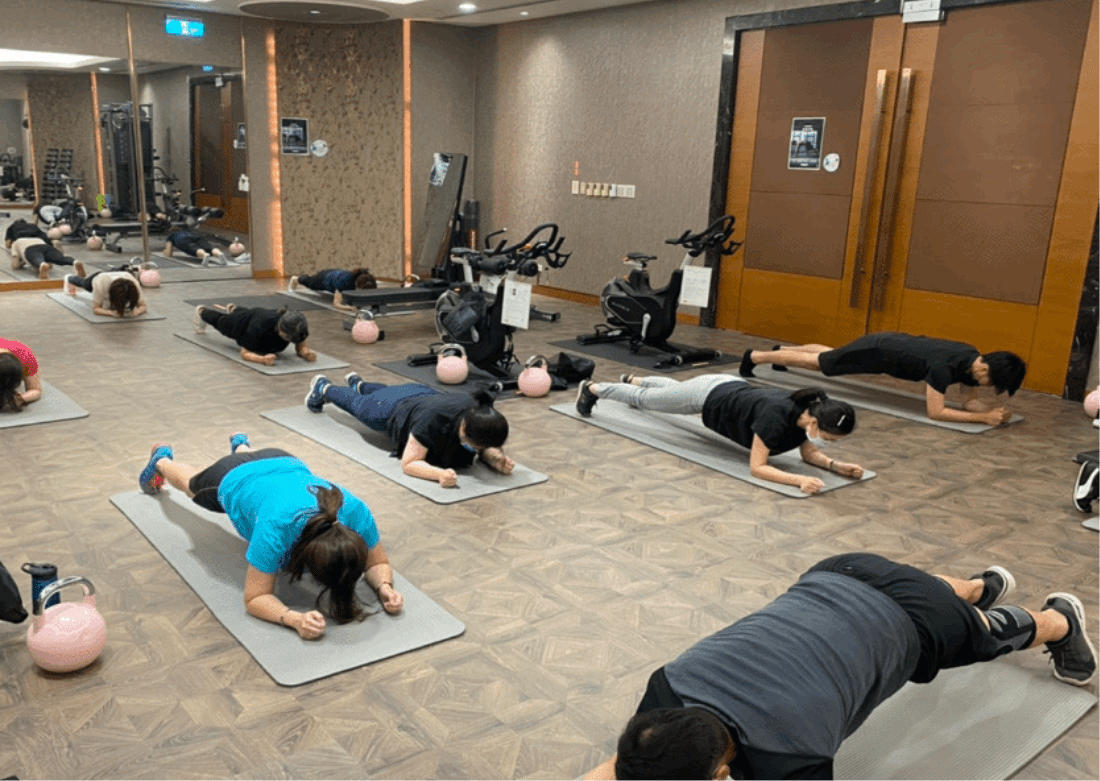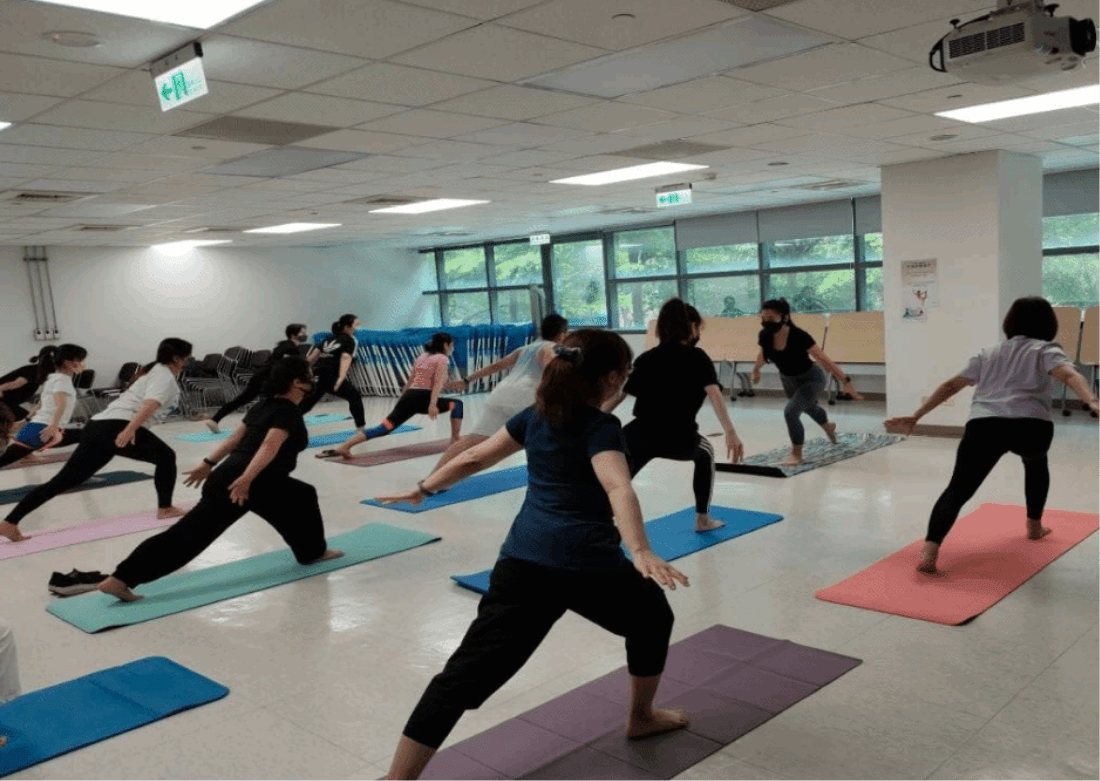A safe and healthy working environment is provided for employees and contractors, with the goal of achieving zero occupational accidents. Continuous improvement of management systems is emphasized to prevent occupational hazards.
TMC complies with the requirements of safety and health laws and regulations, actively implements regulatory assessments, and adjusts occupational safety and health management plans as needed. The company is committed to continuously reducing hazard risks, preventing occupational accidents, and promoting the safety and well-being of employees both physically and mentally.
Environmental Safety Engineering Department
The Environmental Safety Engineering Department oversees matters related to occupational safety and environmental protection. In 2023, we passed the external certification for ISO 45001. Supervisors and personnel at all levels continue to receive training and implement the Occupational Health and Safety Management System, utilizing the PDCA (Plan-Do-Check-Act) approach to achieve continuous improvement and sustainable operations.
Issues related to occupational safety and health management, such as deficiencies and areas for improvement, can be reported to the Group's Environmental Safety Engineering Department, where employees can lodge complaints, propose solutions, and request relevant departments to make improvements. A deficiency correction order will be issued to request the relevant units to provide improvement explanations, and the Environmental Safety unit will track these deficiencies for ongoing resolution.
| 項目 | 短期2025 | 中長期目標2026~ |
|---|---|---|
| 安全職場 |
| |
| 健康促進 |
|
|
-
Conducted monthly communication meetings on operational environmental improvement matters at the factory site and establish assessments for occupational health and safety performance.
-
Implemented a systematic occupational health and safety system and conduct effective validation.
-
Execute in a PDCA (Plan-Do-Check-Act) cycle, continually improving the on-site working environment and ensuring effective implementation.
Responsible units will propose corrective and preventive measures, which the Safety Department will track monthly and request responsible units to review and explain at monthly meetings. We continuously monitor occupational injury indicators with the goal of achieving zero incidents. An external third-party auditing unit will conduct annual verification and review the implementation status of ISO 45001.
Occupational Safety and Injury Prevention
The company has established management measures related to occupational safety risks. When a work-related injury occurs, the standard processing procedures outlined in the management measures are followed, and immediate notification is provided to the supervisor. Regular reviews of work-related injury incidents are conducted, and preventive measures are improved accordingly. The assessment and identification of all hazards at the operational site are carried out. From this assessment, risks and improvement opportunities are evaluated to continuously enhance a safe working environment. Various management measures are implemented for relevant prevention plans, and long-term tracking and improvement are consistently carried out.
Identify hazards
1. The factory invites physicians to conduct on-site identification, assessment, and risk control of health hazards in the operational environment. 2. Identification of hazards in the operational environment is conducted periodically, and suggestions for improvement are proposed. A joint inspection mechanism involving relevant departments has been established. Monthly reviews of on-site deficiencies are carried out, and improvements are implemented.
Risk assessment
1. Develop a customized automatic inspection plan to ensure the timely detection of hazards in on-site machinery, equipment, chemicals, etc., through regular checks and maintenance. 2. Through pre-inspection, hazard identification, and analysis assessments, prioritize and control high-risk hazard factors. Develop and execute improvement plans, continuously tracking progress until completion. 3. Conduct semi-annual operational environmental monitoring in accordance with legal requirements. Capture data on hazardous chemicals used in the factory, occupational noise, carbon dioxide concentration in the air, illumination, and other relevant factors.
Risk control
The results of regular and irregular audits, checks, assessments, and monitoring indicate that all hazard factors are within legal standards and are operating normally.
Each year, occupational safety personnel and healthcare professionals collaborate to formulate the "Four Major Plans" for the annual workers' health service.
1. Analyze and assess the results of workers' health examinations, manage health data, and assist employers in matching workers with appropriate tasks. 2. Implement follow-up management and health guidance for individuals with abnormal health examination results. 3. Evaluate and manage workers with occupational injuries or illnesses and those at high risk of occupational health issues. 4. Plan and implement measures for health promotion. 5. Properly maintain records of relevant occupational disease reports and records of injuries and illnesses.
The scope of suffering physical or mental harm due to the actions of others while performing duties refers to workers who, while carrying out their duties, experience unlawful intrusion by employers, supervisors, colleagues, service recipients, or other third parties in the workplace. This may include incidents such as workplace violence or sexual harassment. In accordance with the "Regulations for Complaints and Disciplinary Measures Against Workplace Harassment and Unlawful Intrusion," preventive and responsive measures are implemented. In 2023, there were no related complaints or incidents reported.
Measures taken for female employees engaged in jobs with potential maternal health hazards include hazard assessment and control, medical counseling and guidance, risk classification management, suitable work arrangements, and other relevant measures.
1. To prevent workers from developing illnesses due to abnormal workloads such as shifts, night shifts, and long hours, conduct necessary investigations into working hours. 2. Assist in communication and coordination for employees with rotating work schedules.
For emergency first aid, TMC has installed two Automated External Defibrillators (AED) within the factory. Regular AED+CPR practical exercises, first aid knowledge training, and employee training are conducted periodically. In the future, the company plans to provide more resources for physical and mental health promotion, as well as organize related events and seminars. This initiative goes beyond protecting employees from workplace hazards and actively promotes the health of the workforce.
The company provides various leisure activities and physical education programs for hardworking colleagues, including muscle training, yoga, aerobic exercises, and badminton classes, among others.
Muscle Training


Yoga
@2x_7772ce.png)

